This Julio Diez Knife is Basically a Machete that can Start Fires
We’ve been fans of Julio Diez’s work ever since we got the Bush Slicer and the SBK and went on one of the best camping trips we’ve had in a long time. He has a functionally overbuilt sensibility with survival knives, and we always find ourselves going from “hey that thing looks fun” to “wait this is actually really useful”.
It was exactly the same with the Plan A Bowie. We had no intention of doing anything purposeful with this almost-machete. We just wanted to cut stuff in half with it, but it turned out to be way better at survival and trail clearing tasks than we expected, and now it’ll probably be one of my primary recommendations in this size category going forward.
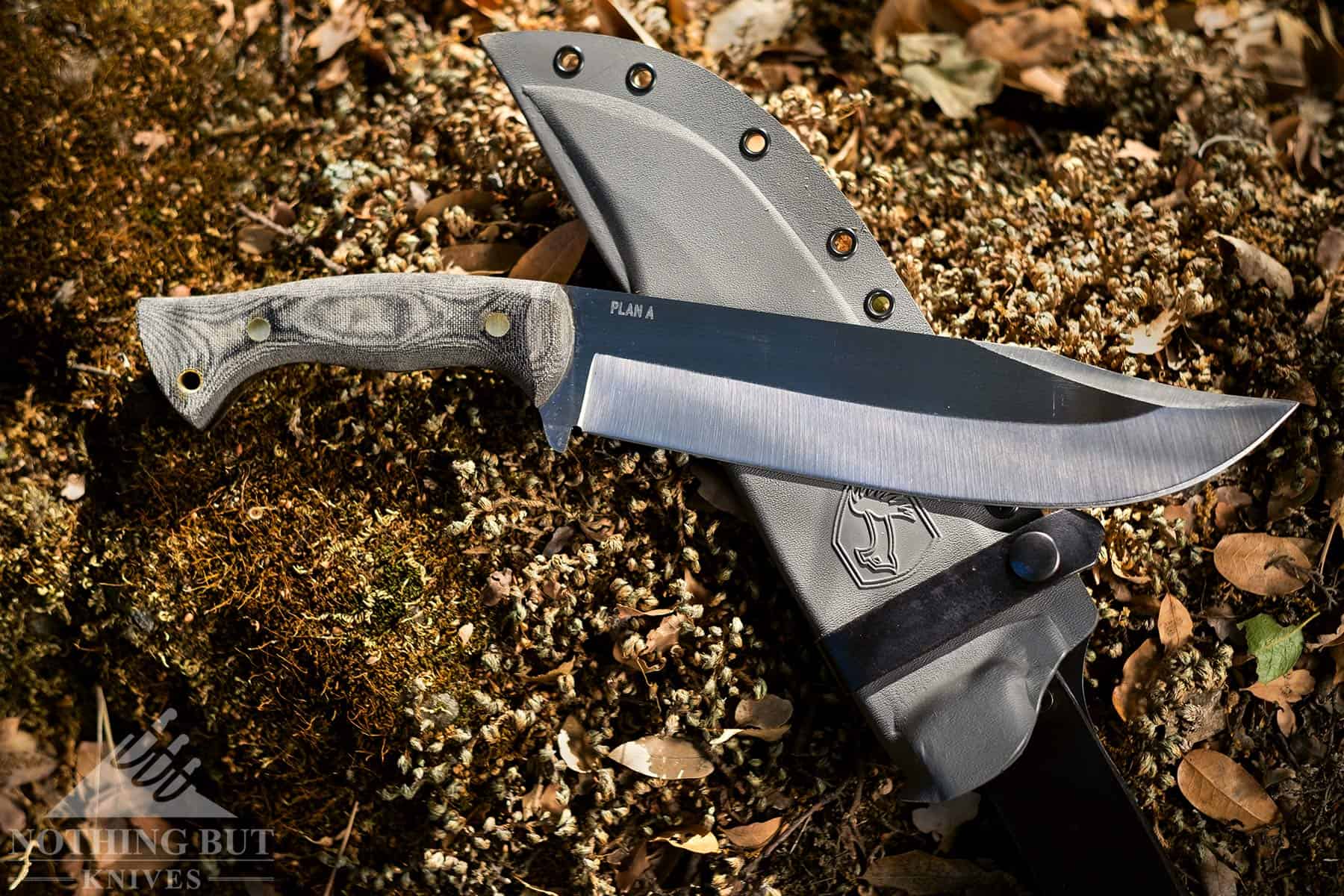
Specifications
| Overall Length: | 14.5” |
| Blade Length: | 9.0” |
| Handle Length: | 5.5” |
| Handle Material: | Linen Micarta |
| Blade Steel: | 1075 high carbon |
| Blade Grind: | Flat |
| Blade Thickness: | 5 mm |
| Blade Style: | Bowie |
| Sheath: | Kydex |
| Knife Weight: | 18.1 oz |
| Weight w/ Sheath: | 24.8 oz |
| Designer: | Julio Diez |
Pros
| It chops even better than it looks like it will |
| Great balance and ergonomics |
| Super grippy Micarta handle |
| Rides easy on the belt for such a big knife |
| Easily pulls sparks off a ferro rod |
Cons
| Soft high-carbon steel |
| The dry Micarta will soak up the environment quick |
| Making fires with big knives is exhausting |
A Pro-Momentum Handle
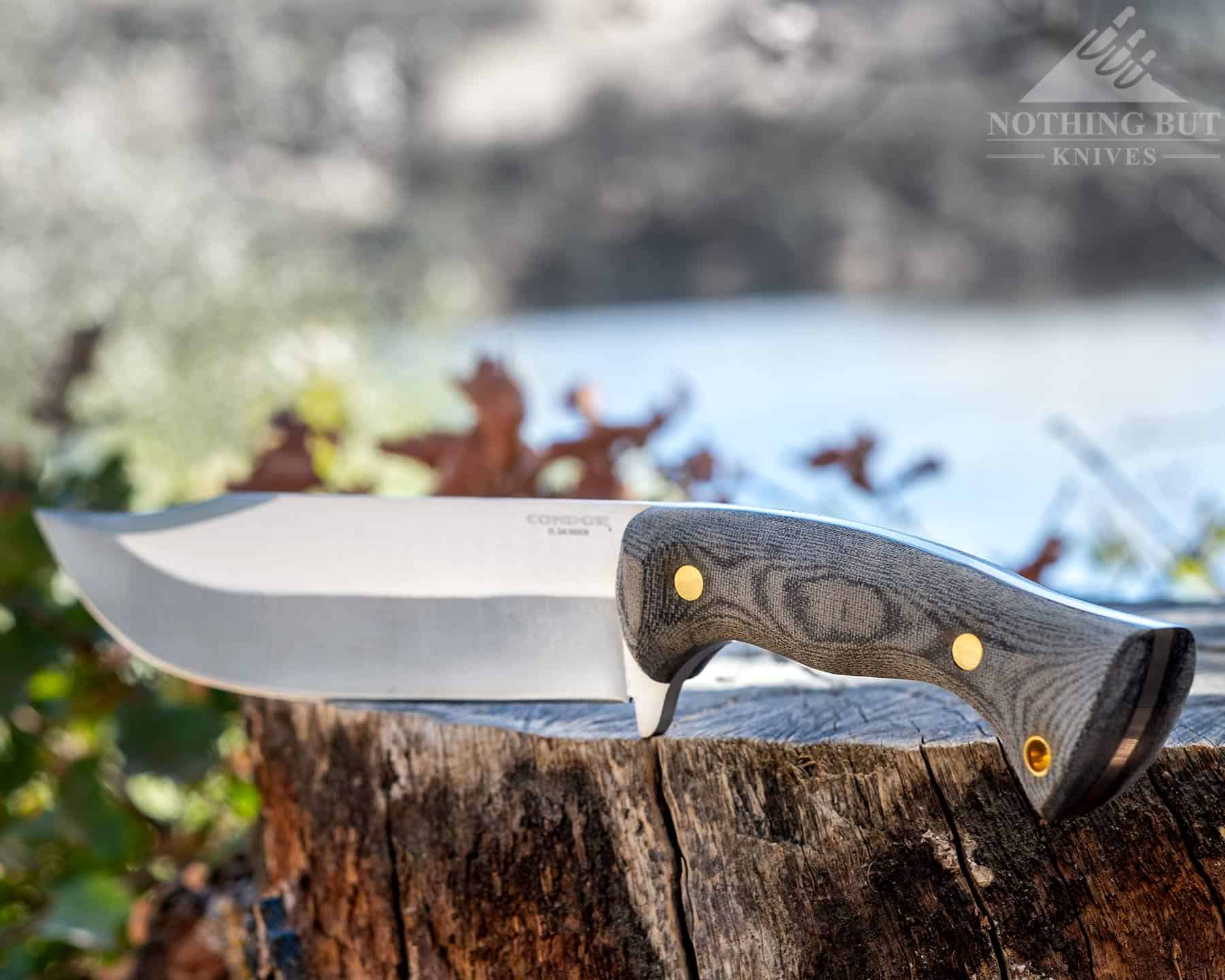
This knife was made for swinging, and that starts with the handle. Everything about the shape of it makes you want to cut stuff in half.
The handle is not only thick and curved inward, but the Micarta is so dry and grippy that there is no amount of damp or grit that could get on it that would make it slippery. This sticks to the hand, and it leans into your palm mid swing in a way that feels incredibly secure.
It’s also really well balanced. The center is somewhere just above the handle, but it feels like Diez did everything he reasonably could to pad weight toward the butt. This thing weighs a little over a pound, but it feels a lot lighter in hand, and even though it’s still weighted more toward the blade, it’s far enough back that the knife as a whole is pretty nimble.
But the Handle is Awkwardly too Dry
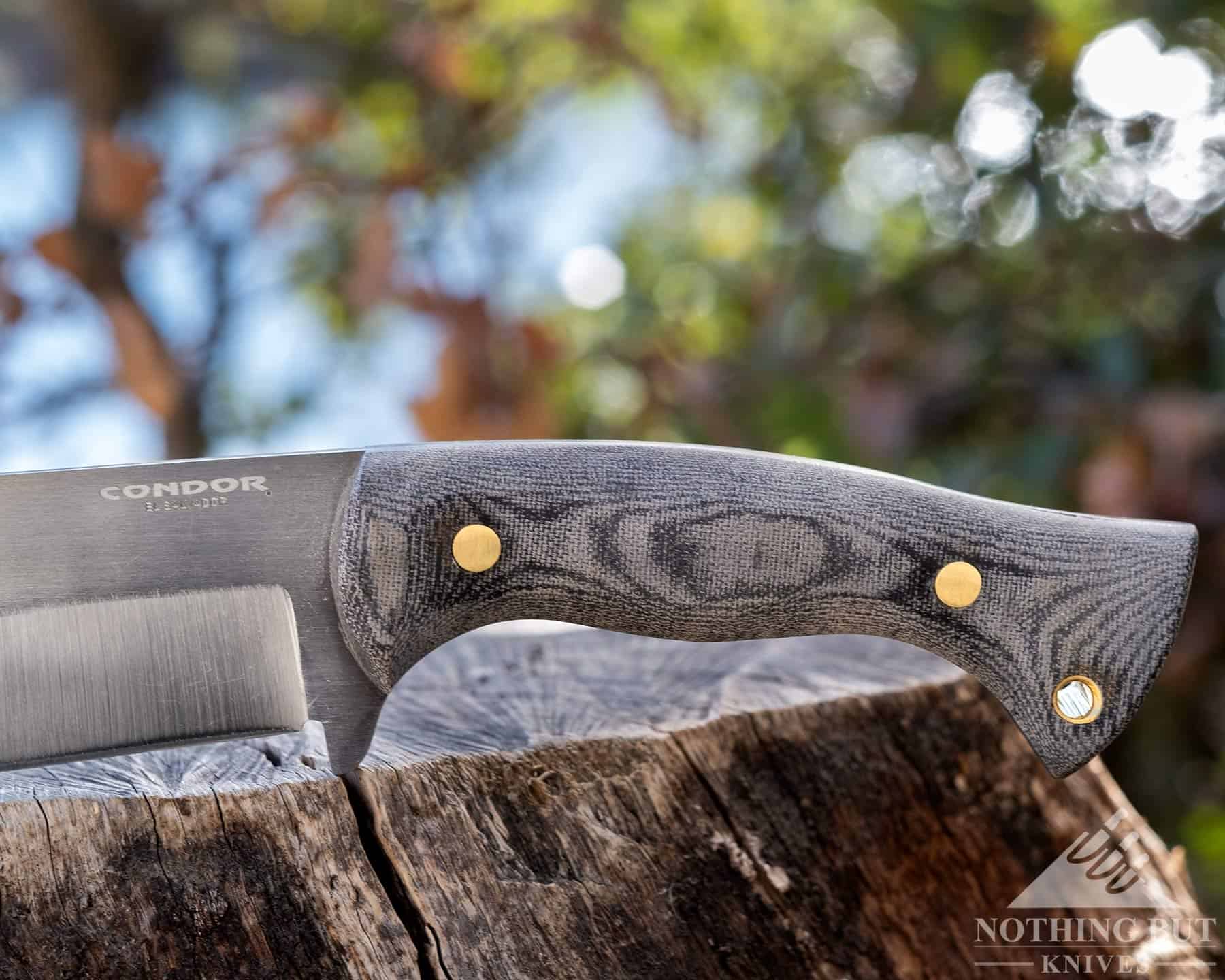
I spend a lot of time complaining about manufacturers making Micarta handles that are too smooth. When I get a knife with Micarta I want to feel the texture of the material, and most knife makers have a bad habit of packing their Micarta so full of resin that it might as well be plastic.
Condor went a little too far the other direction with the Plan A. This almost feels like raw fabric glued to the tang. While that definitely creates a great, textured grip, it’s going to soak up oils and liquids fast. Which is to say, this will start to look aged quickly, and it could get a bit smelly over time if you aren’t careful about what it comes in contact with.
One possible solution is to put a thin coat of wax on the handle. I haven’t tried this myself, so I don’t know if it will affect the grip, but I’ve heard around the forums that it’s a serviceable fix if really dry Micarta is something that bothers you that much.
The Blade and Edge and Holy Crap this Thing Chops like a Kung Fu Master
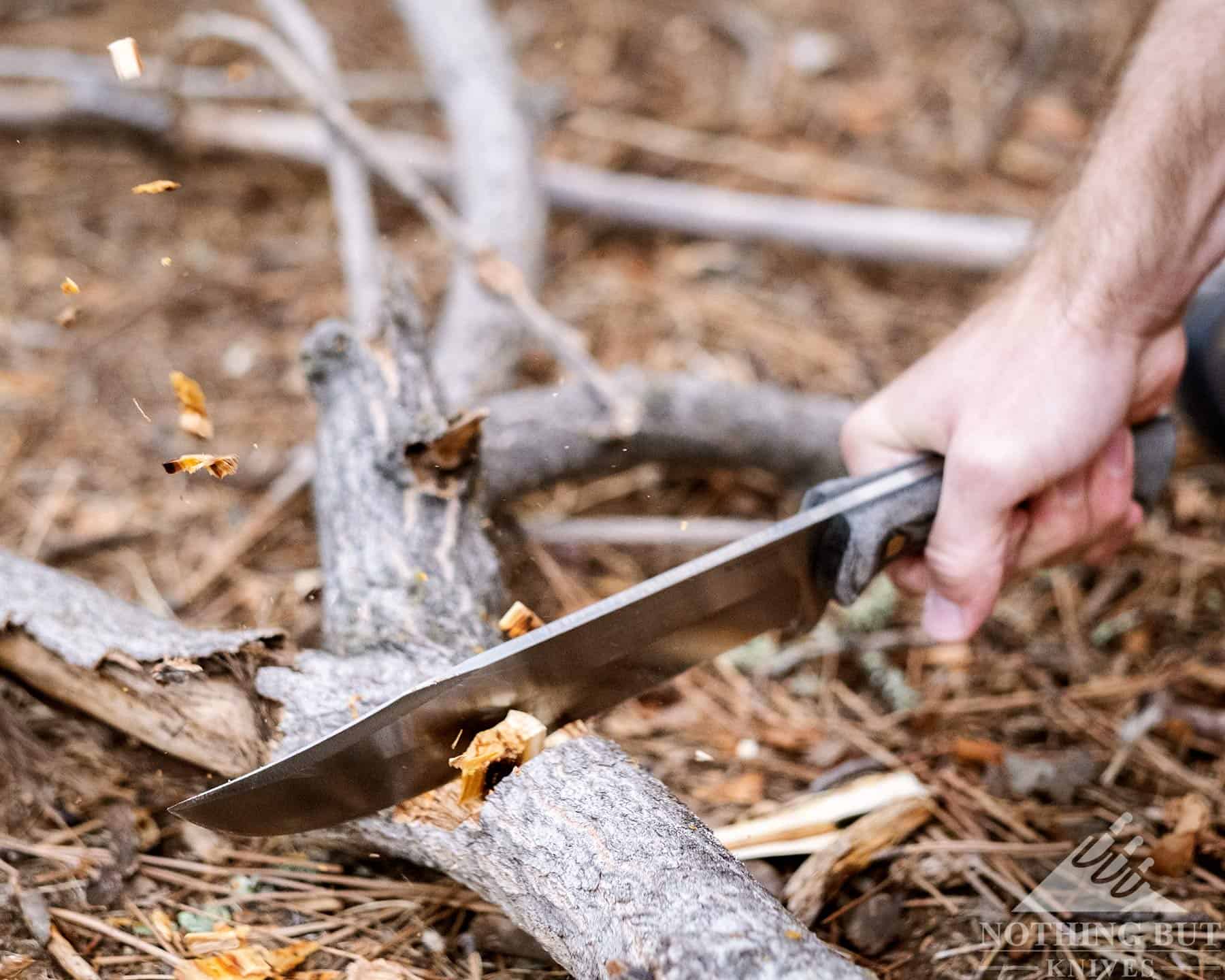
Just from feeling the weight on this “knife”, I knew that the truest thing in the world is that it will cut through a tree if I need it to.
I did not anticipate just how easily it would accomplish something like that, though. It turns out the Plan A doesn’t just have a blade heavy balance; it has an edge. Combine that with the helpful curve of the handle and the overall weight of the blade and you get a big damn knife that comes as close to functioning like an axe as any knife I’ve used.
With a half-exception when it comes to batoning, but no one batons with an axe. No one needs to baton with an axe, and you don’t with the Plan A Bowie either.
The Good Edge, Simple Steel, and the Simple Mind that Tested Them
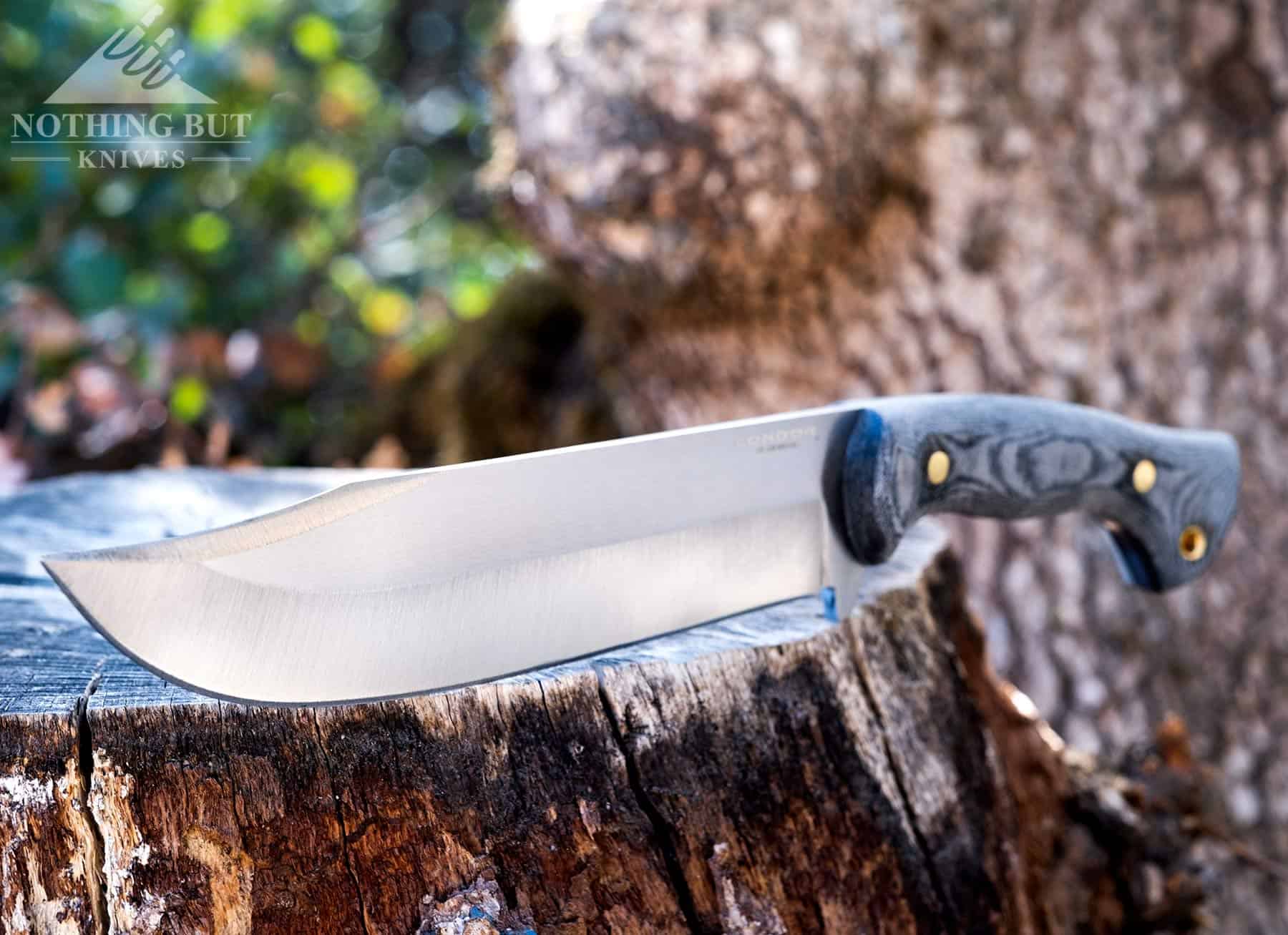
Condor likes their basic high-carbon steels. I don’t think anyone looking to buy a Condor knife expects to see anything far outside the range of 1095. The 1075 steel in this knife shouldn’t be a surprise either.
I like 1075 in particular for a knife this big, though, because it tends to perform better in softer hardnesses and it doesn’t rust quite as easily as 1095. It’s an especially great steel for abusing and fixing up, which is perfectly in line with the kind of work the Plan A Bowie was made for. Although I would love to see this in some kind of powder steel, but I’d love to see almost everything in a powder steel, so no surprises there either.
I started out testing the steel and edge on this knife (in what has become an all-too-common stroke of genius) by boldly dropping it on concrete. I still don’t know what counts as a fail on the concrete test, but it came away with a chip and a small roll.
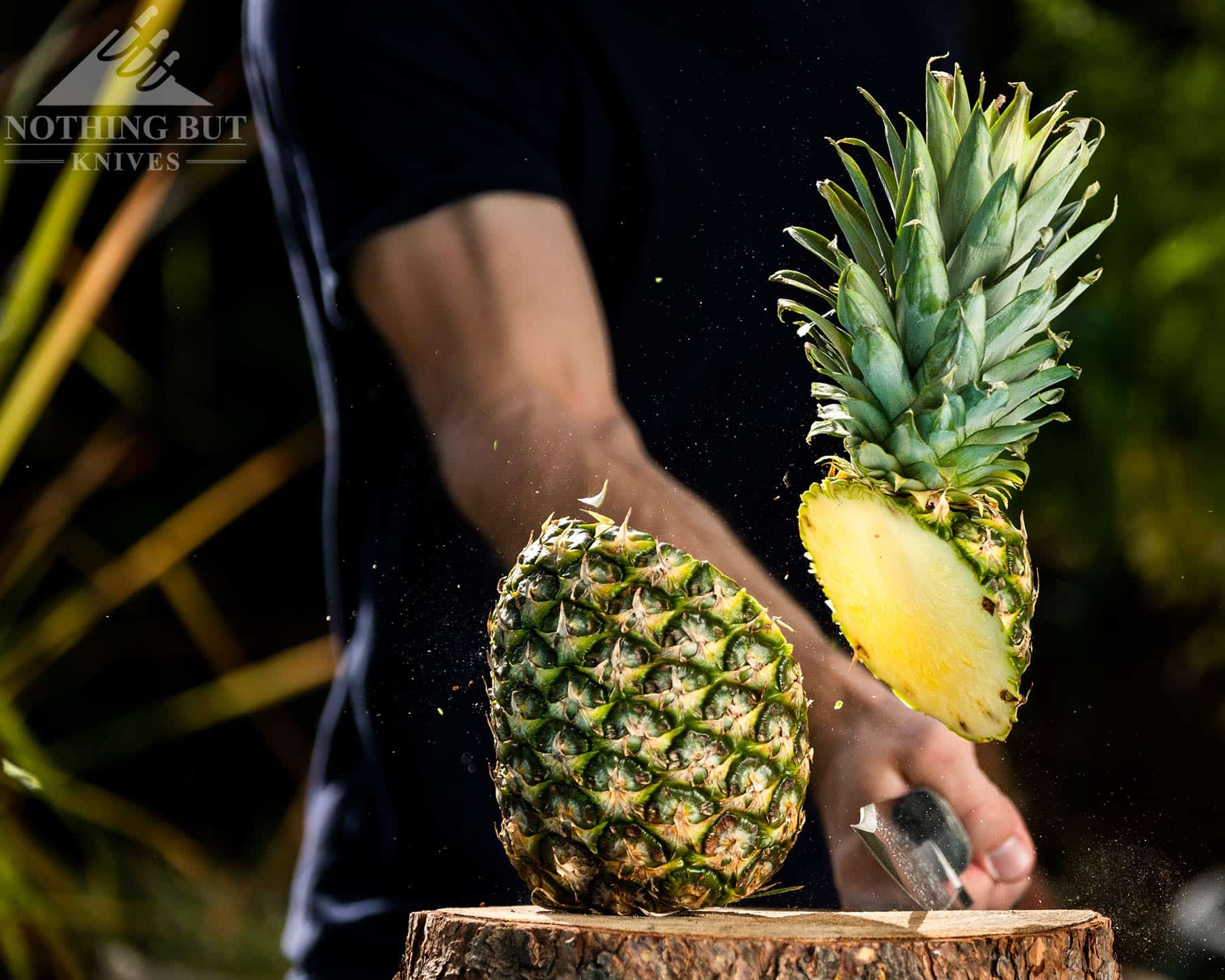
Then I cut a freestanding pineapple in half with it.
This was when I saw the Plan A Bowie’s core value: it remains highly functional through a lot of damage. Forget any ideas about tough or hard steels. I did horrible things to this blade and it still made feather sticks, cut through a squash, and chopped through a few branches.
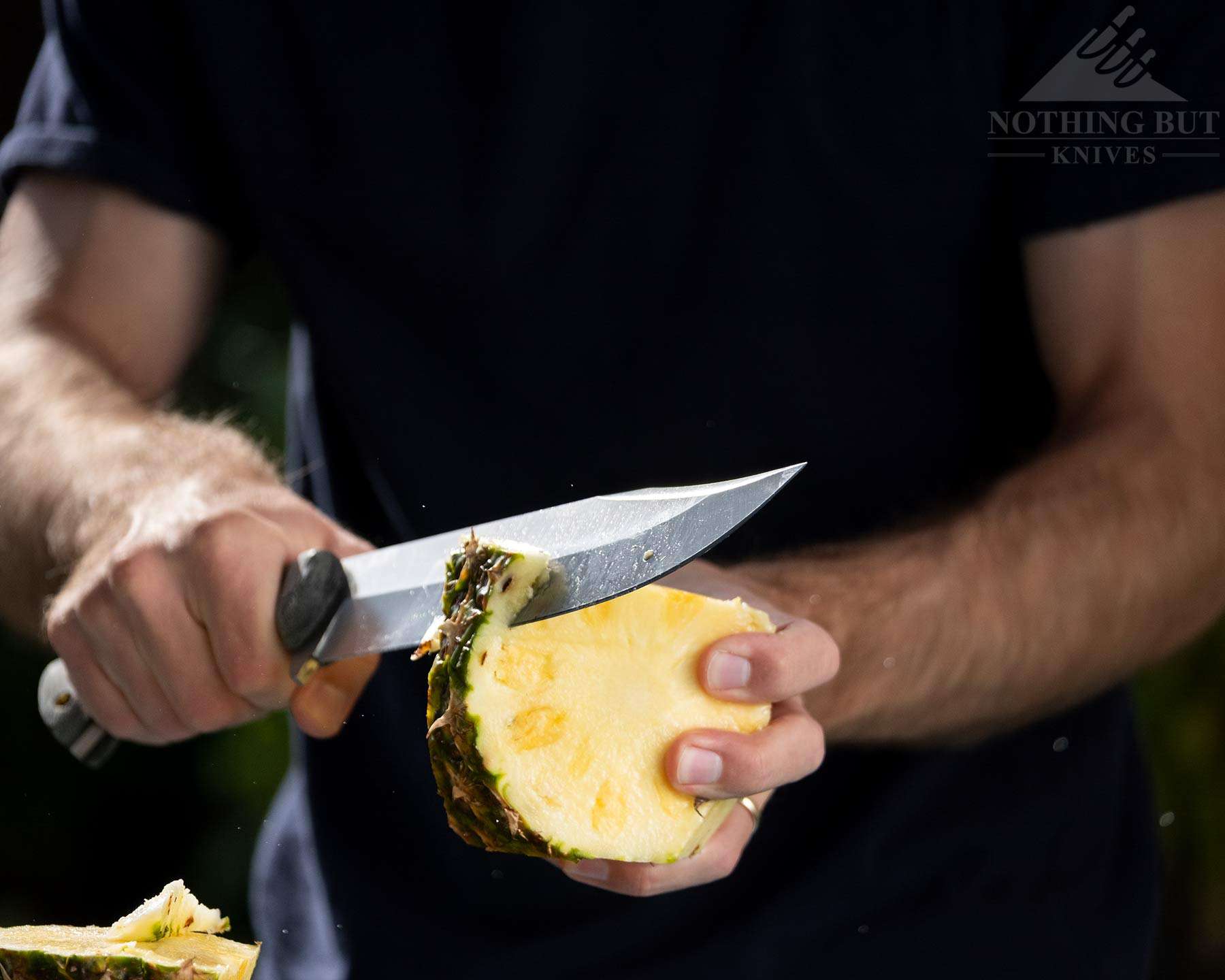
I think the credit for that die-hard level of function is a good negotiation between the edge geometry and the weight of the blade. This has a fairly thin edge. I’d say it borders on too thin, but when you’re swinging hard and fast, it’s often the shape right behind the edge that matters, and that seems to be at a good compromising angle that keeps the blade biting even when it gets a lot of chips and rolls.
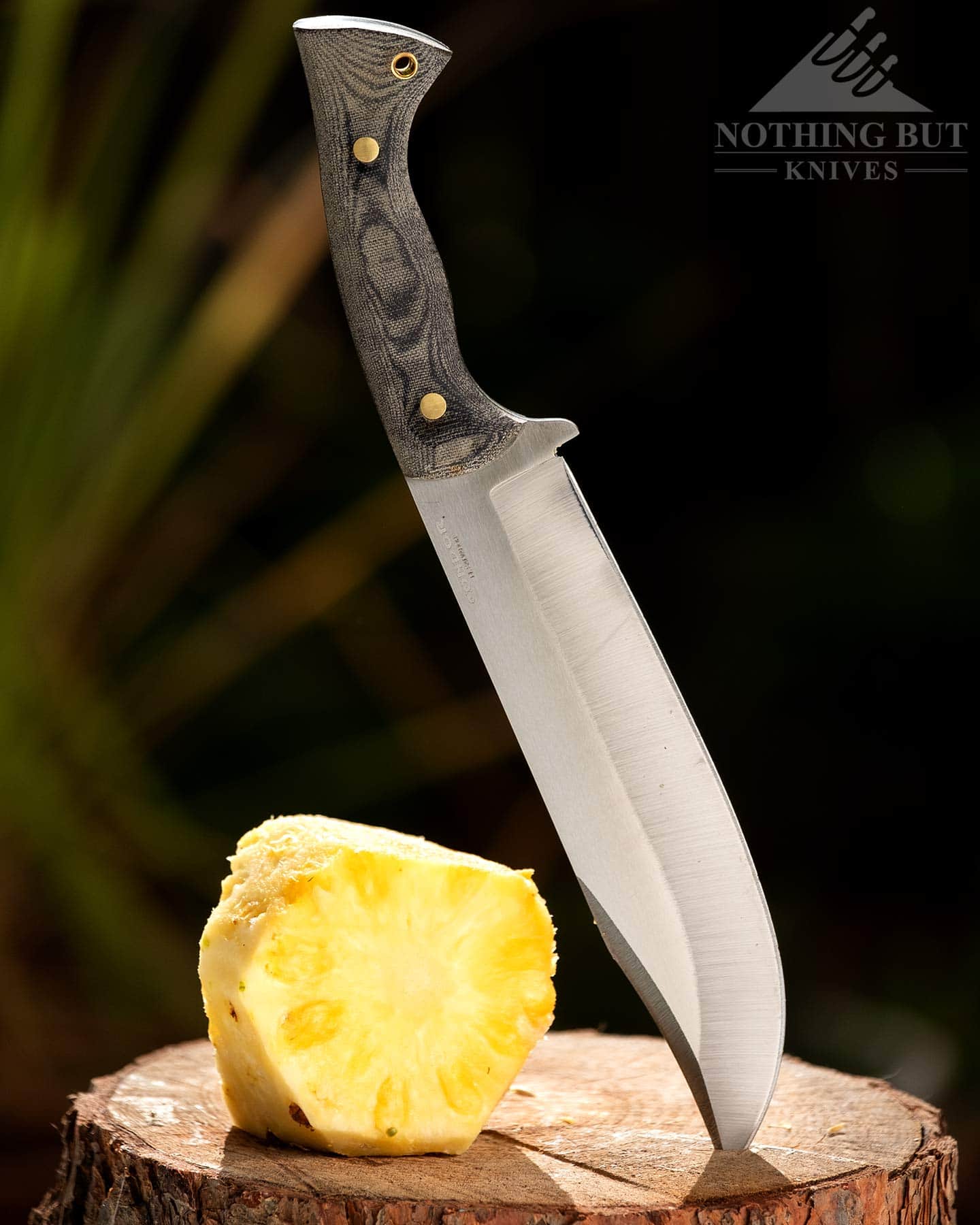
So long as you keep chopping with the top part of the blade and save the bottom inches for finer work like carving and making feather sticks, this should stay at the same level of usefulness for a while.
Good Chopping Doesn’t Translate to Good Batoning
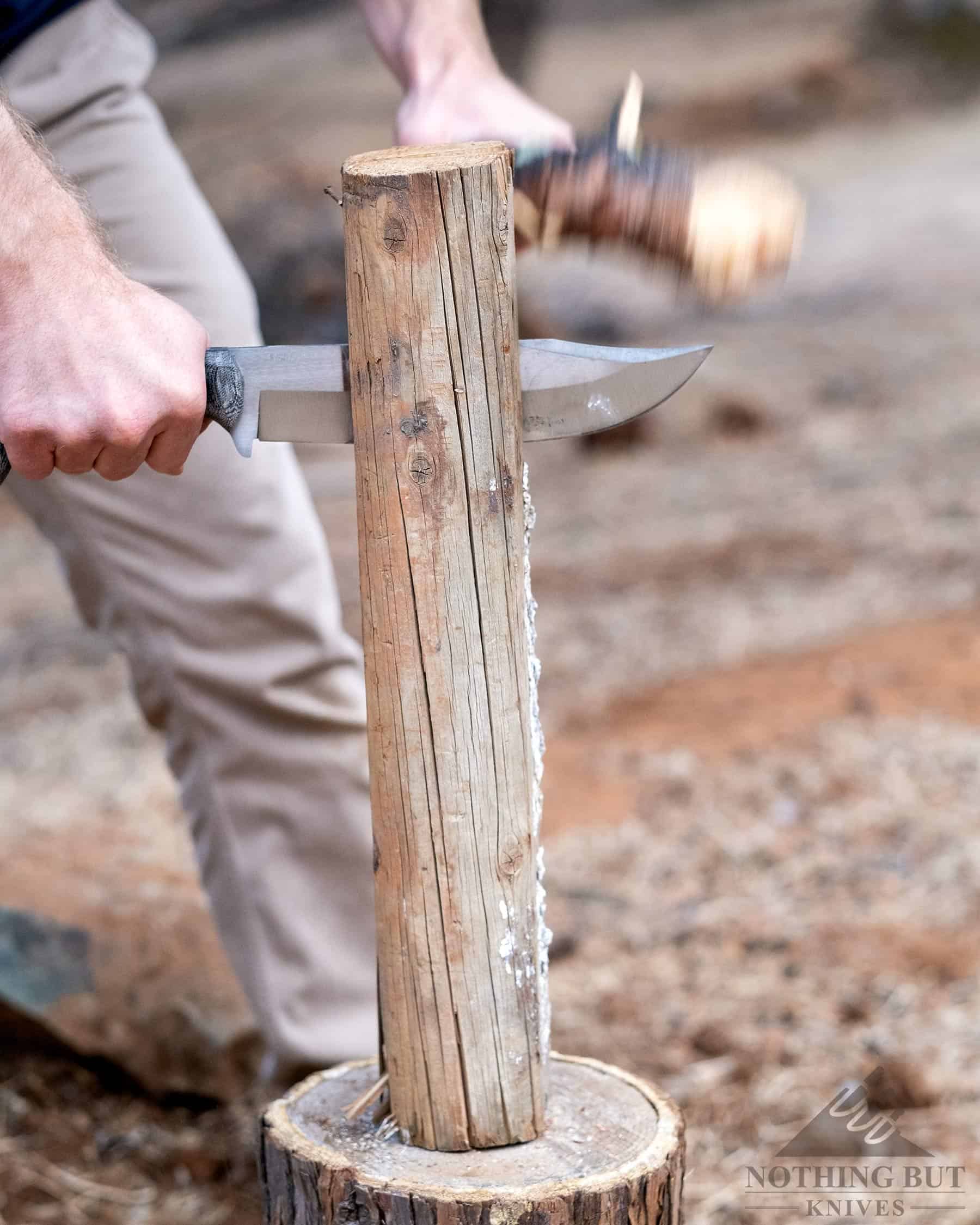
While the weight of the blade and the biting edge turn the Plan A into a terrifying lopper, I think the (relative) thinness of the blade makes it less than ideal for batoning.
Granted, the wood I tested it on was pretty damn tough, but after struggling through a log I decided to test it against one of our better batoners, the Off Grid Alpha Dog, and that knife only got about halfway through before it managed to make a split.
It is not at all fair to compare the Alpha Dog and the Plan A. They were clearly designed for opposite ends of the survival task spectrum. But it does highlight an important element in both:
The Alpha Dog can split logs like a champ because the blade gets thicker in a shorter amount of space, so it has that wedging effect you need to split wood apart.
The Plan A is pretty thick, but it’s thinner behind the edge and widens at a more gradual pace. That’s the kind of shape that’s optimized for swinging at vines at full speed (and that’s the kind of task where I’ve been the most consistently surprised by this knife), but it’s not ideal for splitting logs.
The thing is, though, we were testing this on full rounds, which you should probably never do with any knife. It could handle most half or quarter logs fine just by virtue of being big, easy to hit, and generally built to take abuse.
The Fire Stuff
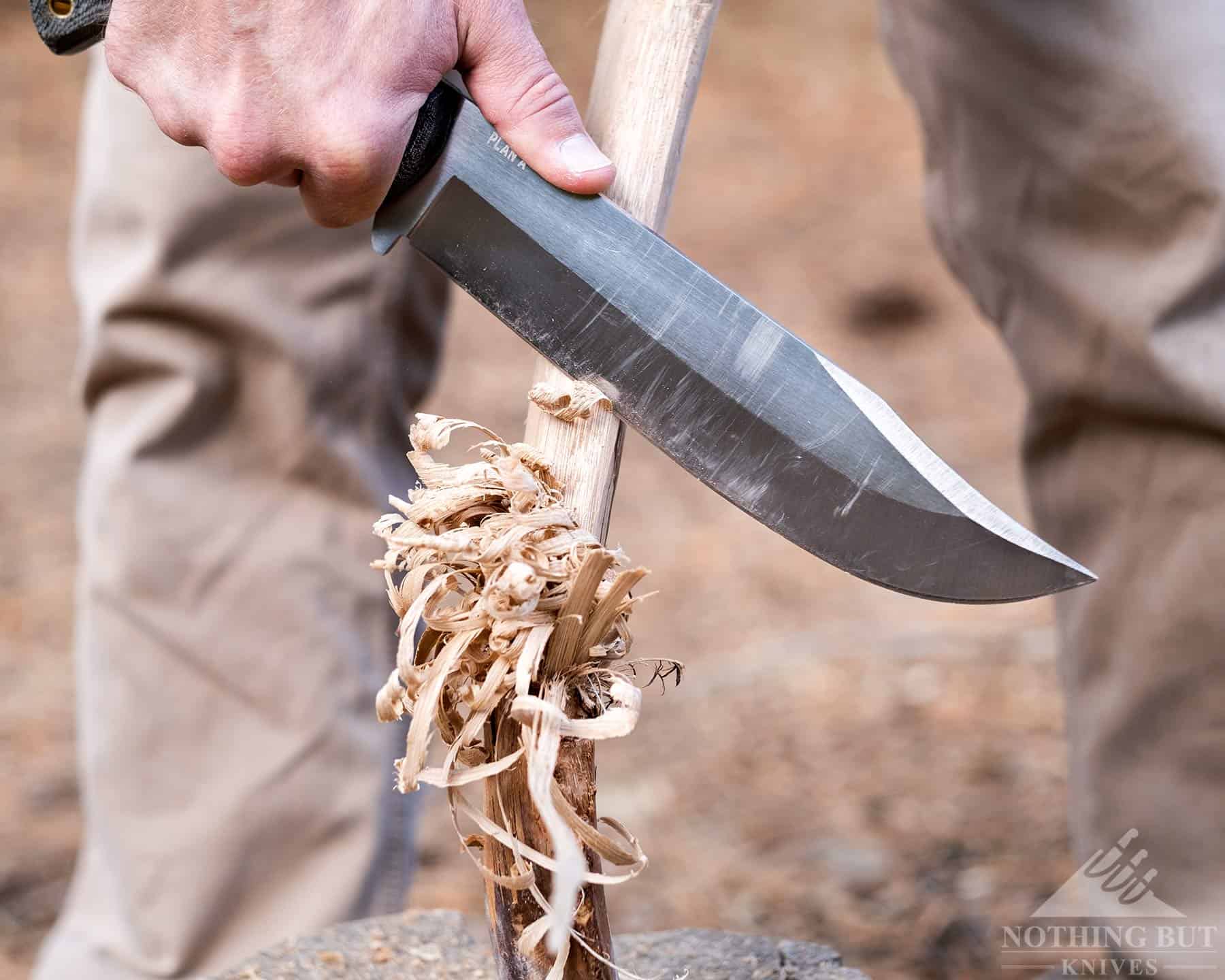
You absolutely can make wood shavings and get spark off a ferro rod with the Plan A. The spine on this is a hard 90 degrees that catches on the metal really easily.
It’s not quite as good at making feather sticks. It took us a while to find the angle that let us control thickness and gave us decent curls, but once we found the right spot, the knife made some pretty respectable tinder.
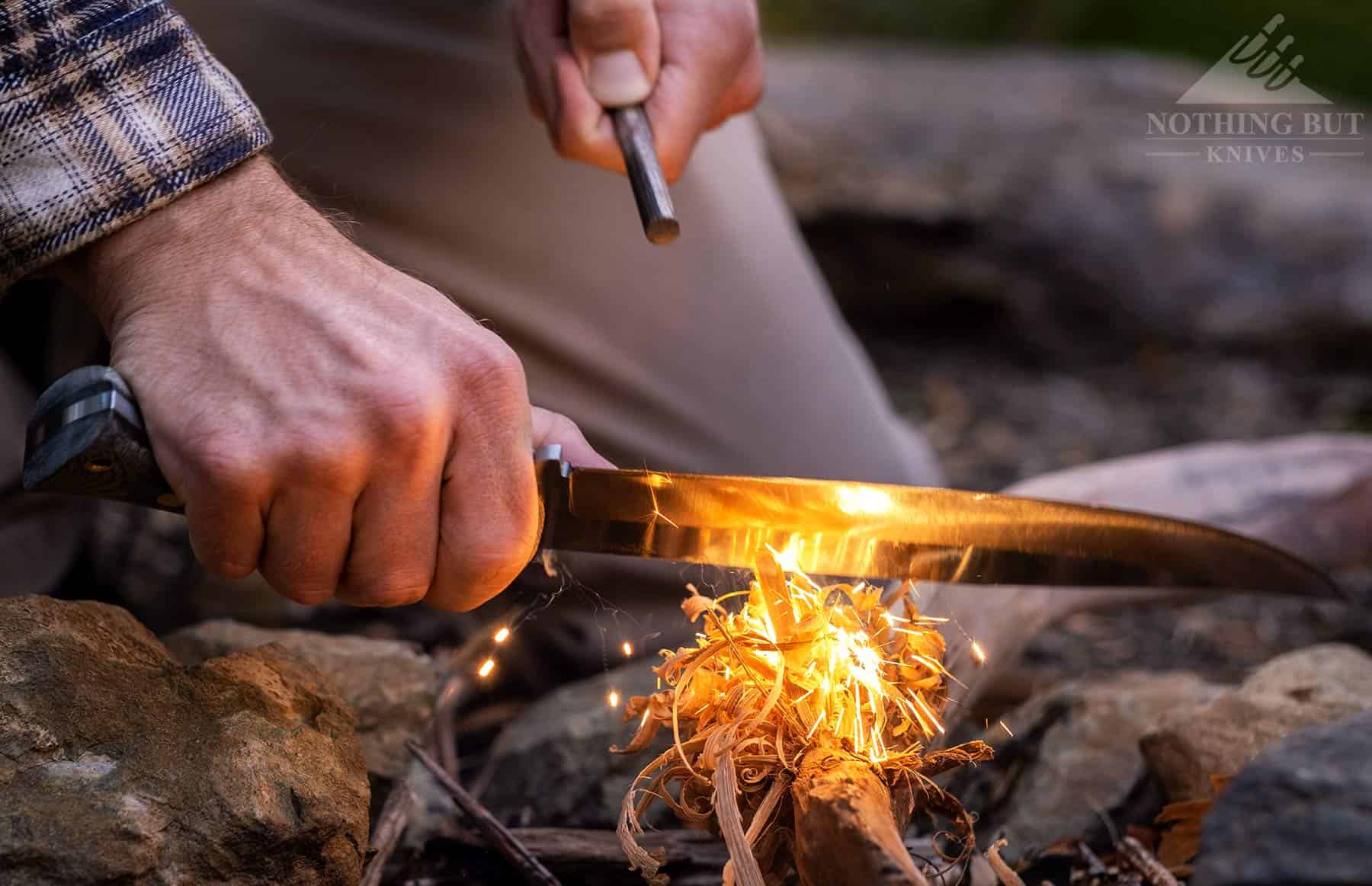
The main thing holding it back in the fire-making category is the size and weight of it. It helps some that it’s well balanced, but it’s still a pound of steel. Making a fire with anything this size is going to be more exhausting than it needs to be. If the Plan A handn’t been so good at making sparks I probably wouldn’t have gone all the way through getting a full flame with it.
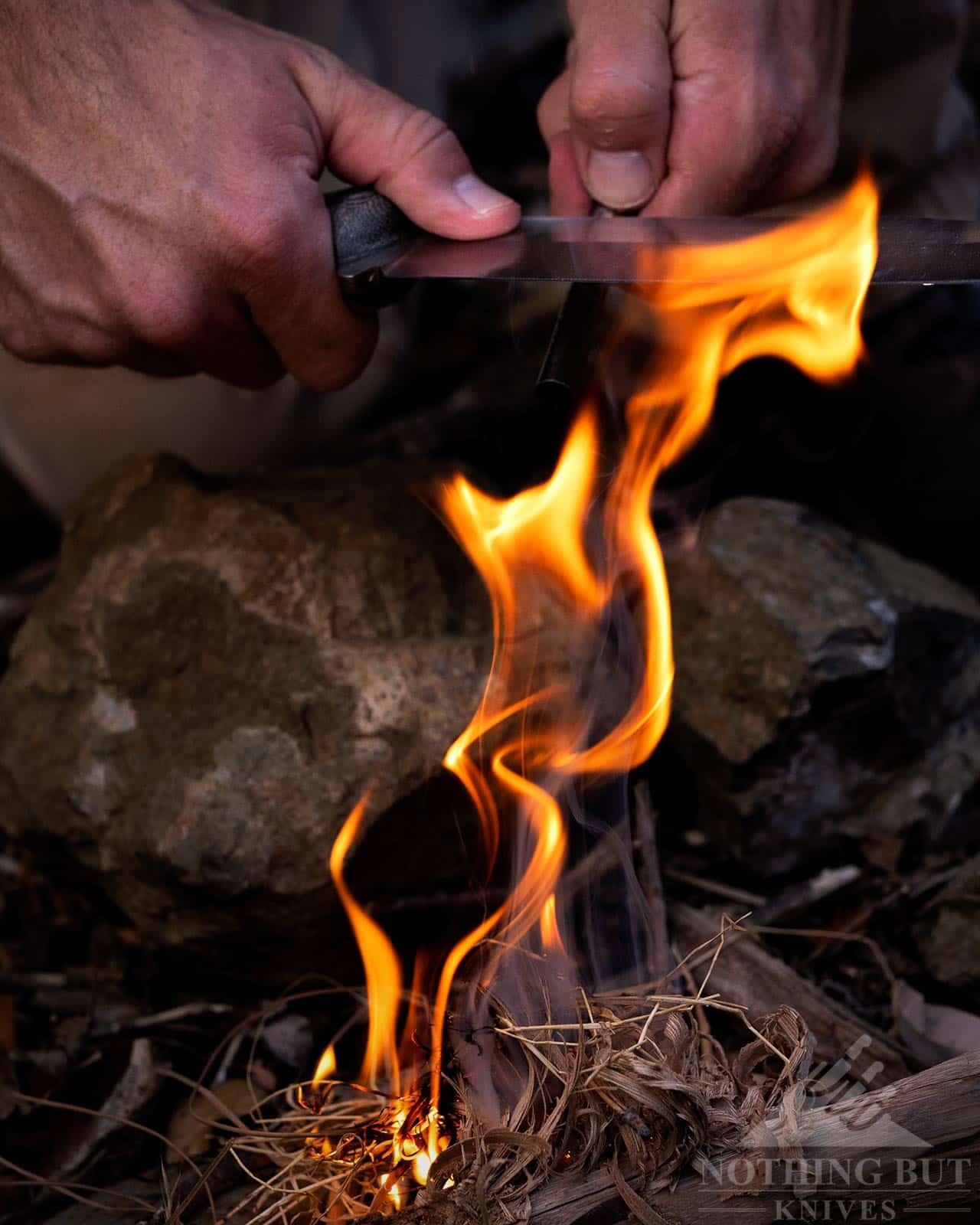
Overall, though, I’d say it gets high marks in fire stuff.
The Sheath and Surprisingly Non-floppy Hiking
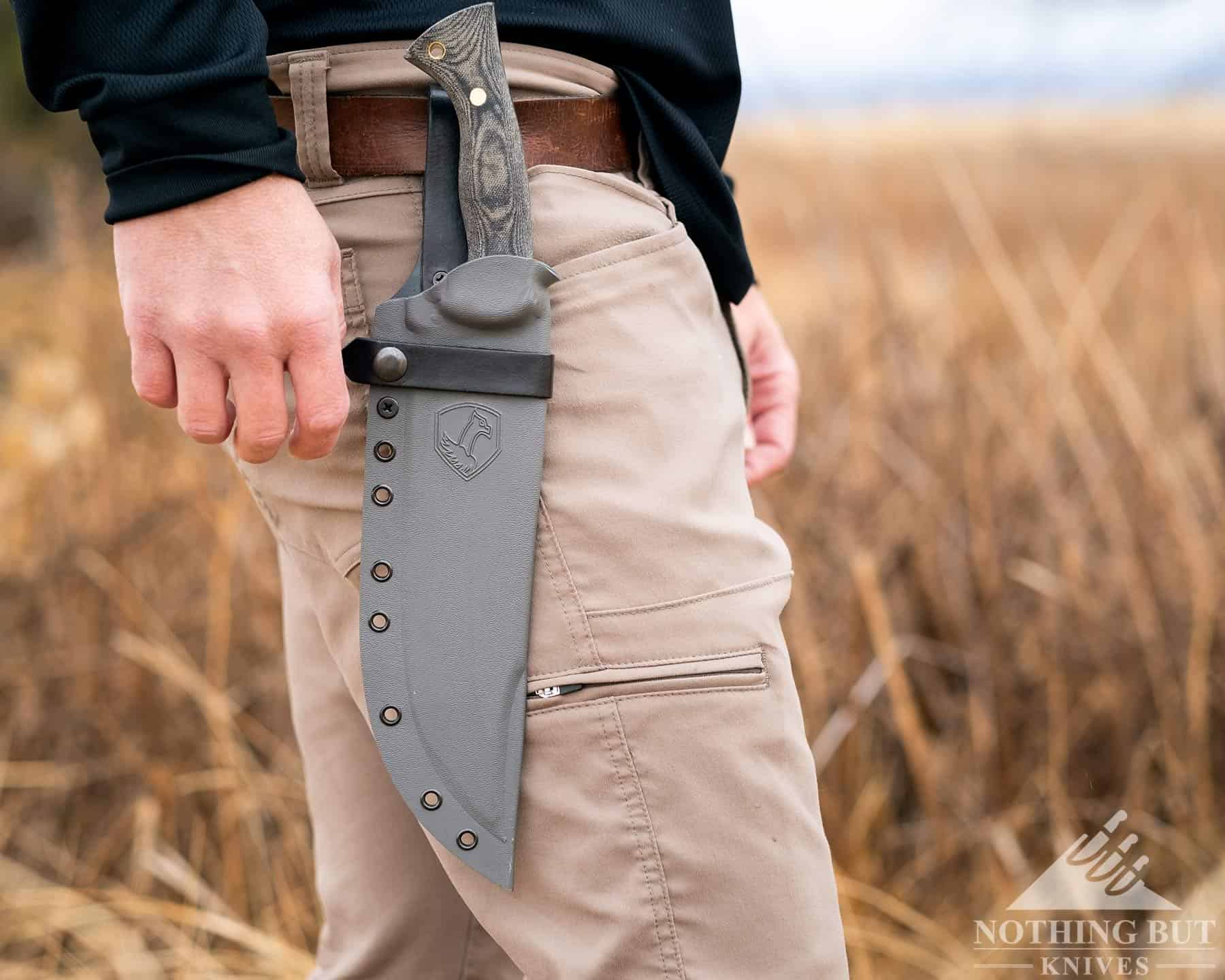
As good as Diez is at designing knives, his real specialty is in sheaths. The Plan A’s sheath is maybe a more subtle example of that expertise, because there’s nothing specifically remarkable about it. At least, not like there is with the Bush Slicer. But there’s something about the way it rides once you get it strapped to the hip that has the sense of careful thought.
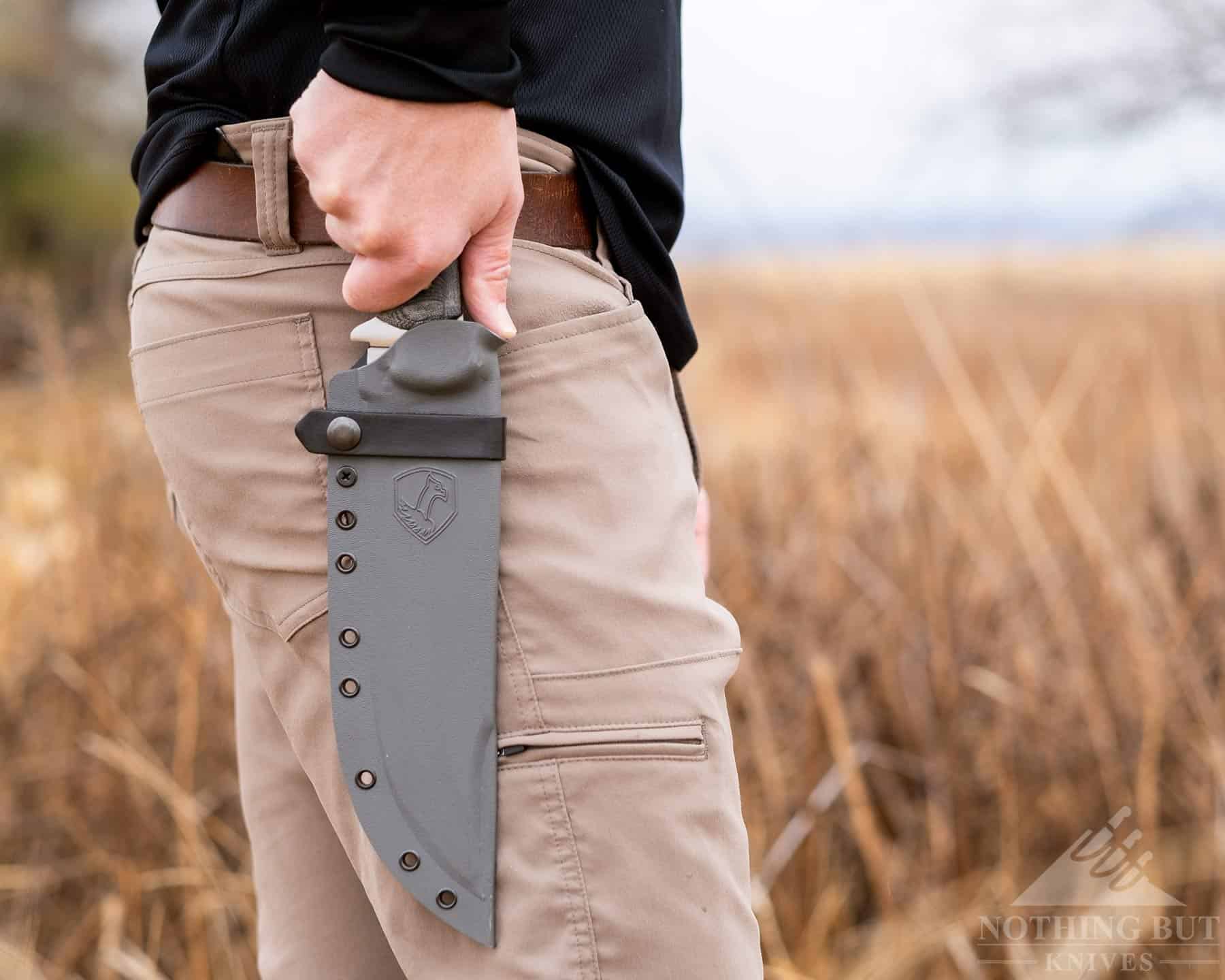
I’m not sure I could pin it down specifically, but Diez seems to have found the perfect length for this sheath to hang (at least for my body type). When I hike with something this big I expect it to tug at my belt and bang around on my leg. The Plan A did flop around a little, but it didn’t really feel cumbersome.
The wide leather loop seems to do a great job of holding the heaviest part of the knife close to the hip, so the only real movement is the blade popping outward a little as I walk. That’s easy enough to fix by running a paracord through the sheath holes and tying it to my leg.
As far as 15-inch knives go, this is as easy to carry as any of us could hope for.
Comparison and Alternatives
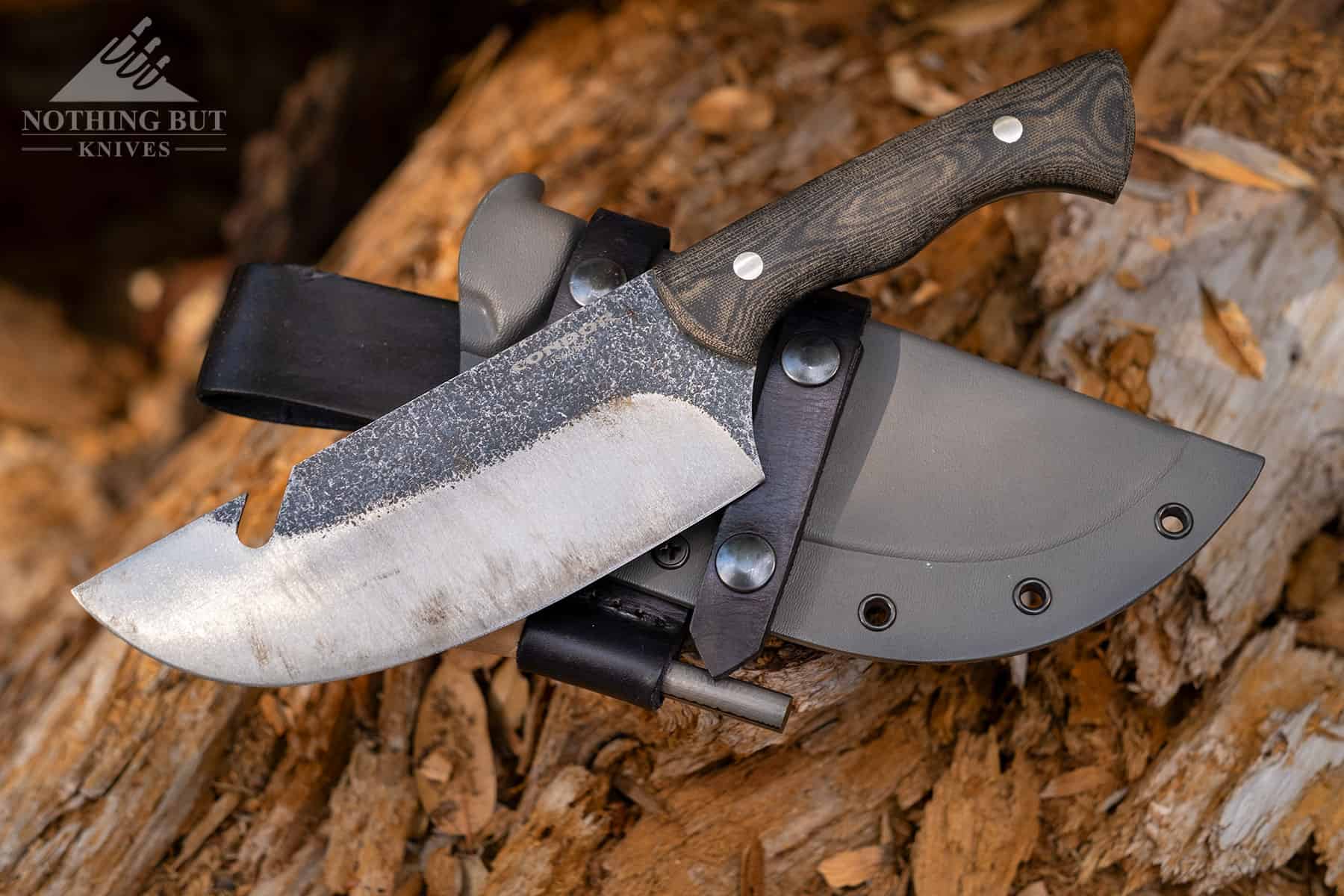
The only knives I’ve used that compare in size to this thing (so far) are the Cold Steel Black Bear Bowie, and the Browning Battle Bowie. One of those is arguably tougher but has basically no edge, and the other might be a little sharper but the edge will bend if you look at it wrong. The Plan A Bowie is on another level entirely, both in terms of edge geometry and handle comfort. But the price difference between all of them is worth considering. If you’re on a tight budget for a really big knife, I’d hit up the Black Bear or the Battle Bowie.
Going up in price, the more obvious choices are Diez’s other designs: either the Condor Bush Slicer (if you plan on doing a bit of cooking) or the SBK (if you want to trail blaze with something a bit smaller).
The name “Plan A Bowie” kind of has apocalyptic vibes, though, so if we step away from size comparisons and just consider the knives that I would snatch up when shit hits the fan I’m faced with a harder choice in the shape of the Buck GCK.
It has a completely different shape, size, and edge geometry, but it’s very similar in that it’s a knife that can do a lot of every kind of task and is ridiculously fun and scary to hold. The choice comes down to the nature of the emergency, though: if the world is about to end and I have time to run into the woods, I’ll probably pick up the GCK. If the zombies are coming the hell in the room right now, I’m picking up the Plan A.
If your biggest problem with the Plan A Bowie is that you think it is too small, you should check out the Julio Diez designed Work Tuff Gear Apex.
The Plan A is a Good Option if You Want A big Bowie Knife
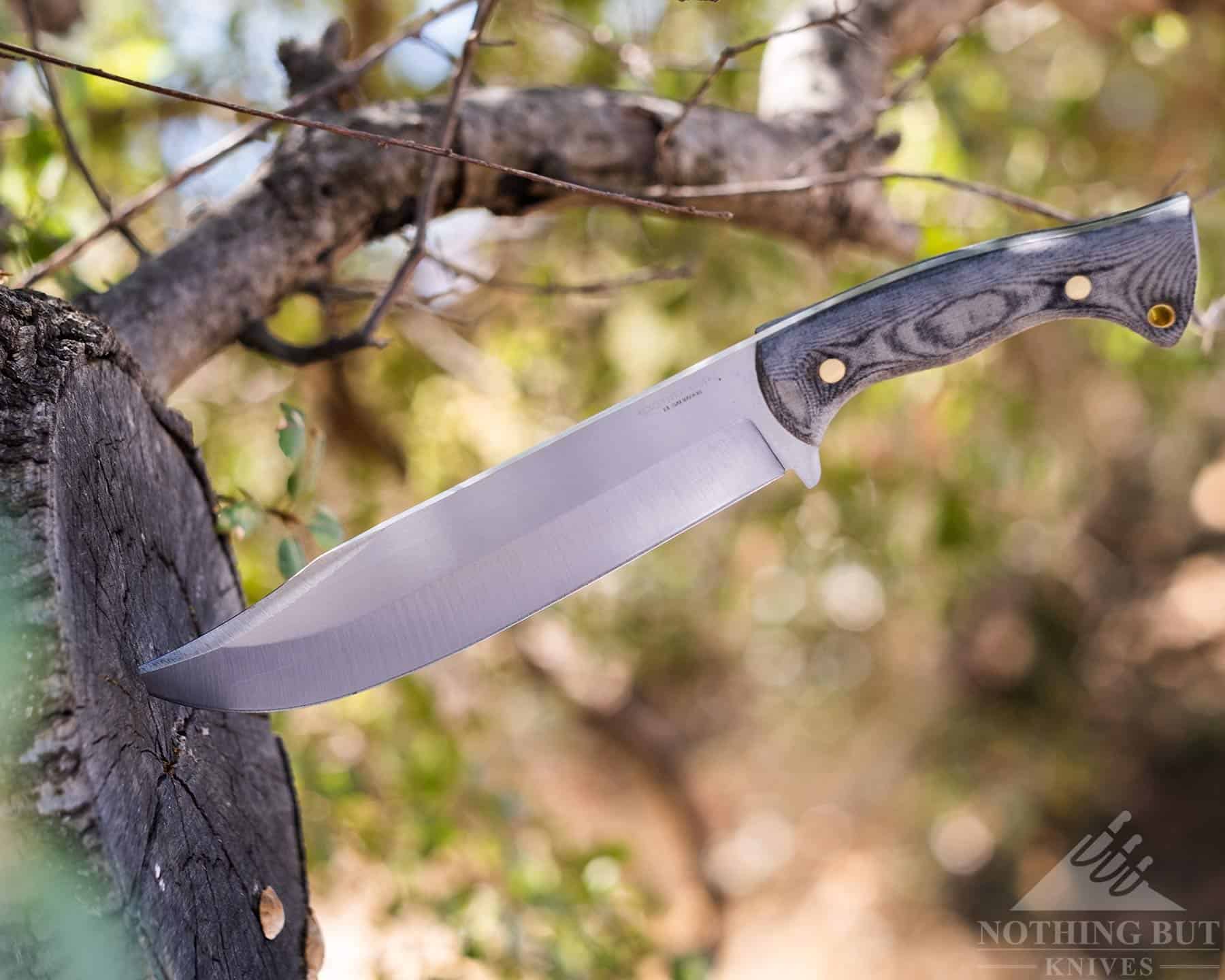
This knife is awesome. That’s about as much as any of us honestly need to know.
But if you’re looking for reasons to justify dropping a hundred dollars on what’s basically a high-functioning machete, then consider that this is one of the best trailblazers we have reviewed so far on this site. You could argue the steel is too soft, and you should definitely be careful about what kinds of fluids come in contact with the handle, and maybe throw a coat of food grade blade oil on it. But soft steel and grippy handles are the bread and butter of rough and tumble survival knives like this.
The Plan A Bowie is incredibly comfortable in the hand, and it cuts clean. The good sheath is a bonus. The grippy Micarta handle that begs your arm to swing a little faster is a much bigger bonus. If there is any amount of brush clearing that needs doing in your life, you will absolutely find a use for this knife if you put it on your hip.
